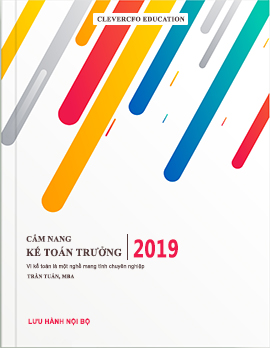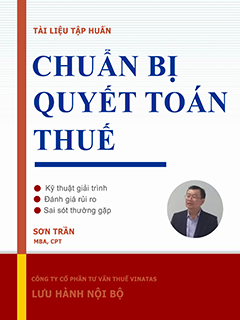Accounting Dictionary – 48 - MAR
MACRS is Modified Accelerated Cost Recovery System.
MAINTENANCE is the activity involved in maintaining something in good working order. May include replacement of signifcant portions of the item(s) being maintained.
MALPRACTICE INSURANCE see E&O INSURANCE.
MANAGEMENT ACCOUNTING is the process of identification, measurement, accumulation, analysis, preparation, interpretation, and communication of financial information used by management to plan, evaluate, and control within an organization and to assure appropriate use of and accountability for its resources. Management accounting also comprises the preparation of financial reports for non-management groups such as shareholders, creditors, regulatory agencies, and tax authorities.
MANAGERIAL ACCOUNTING is a system using financial accounting records as basic data to enable better business decisions in the areas of planning and control.
MANAGEMENT BY OBJECTIVES (MBO) is a management theory that calls for managing people based on documented work statements mutually agreed to by manager and subordinate. Progress on these work statements is periodically reviewed, and in a proper implementation, compensation is usually tied to MBO performance.
MANAGEMENT CONTROL SYSTEM is essentially a strategic tool for holding managers accountable and responsible for their performance. Existence of such a system also provides feedback for managers to know how they perform, in which direction the organization is heading, and what type of course correction may be required to stay on course.
MANAGEMENT INFORMATION SYSTEM (MIS) is a well-developed data management system that provides uniform organizational information from all areas of the entity within a database. Information within the database is manipulated to help management reach accurate and rapid organizational decisions.
MANAGEMENT LETTER identifies issues not required to be disclosed in the Annual Financial Report but represent the auditor's concerns and suggestions noted during the audit.
MANDATORY TRANSFERS are transfers from the current (operating) fund group to other fund groups arising out of binding legal agreements related to the financing, e.g., in education: debt retirement, interest, and grant agreements with federal agencies and other organizations to match gifts and grants. Whereas non-mandatory transfers would be transfers from the current (operating) fund group to other fund groups made at the discretion of management to serve various objectives, e.g., additions to loan funds, endowment funds, plant additions, and voluntary renewal and replacement of plant.
MANUAL TAG SYSTEM is a inventory tracking system used in inventory management that tracks inventory using tags removed at the point of purchase.
MANUFACTURING ACCOUNT is an accounting statement that is an integral part of the final accounts of a manufacturing organization. For any particular period, it indicates, among other things, prime cost of manufacturing, manufacturing overhead, the total manufacturing cost, and the manufacturing costs of finished goods.
MANUFACTURING CONCERN is an entity that derives its products for sale, thereby revenue, through the direct manufacture of those products.
MANUFACTURING STATEMENT see MANUFACTURING ACCOUNT.
MAP can mean Manufacturing Application Protocol, Merchant Account Provider, Minimum Advertised Price, or Major Accounts Processing among many others.
MARGIN see GROSS MARGIN.
MARGIN (Stocks) allows investors to buy securities/assets by borrowing money from a broker/banker. The margin is the difference between the market value of a stock/asset and the loan a broker/banker makes.
MARGIN ACCOUNT (Stocks) is a leverageable account in which stocks can be purchased for a combination of cash and a loan. The loan in the margin account is collateralized by the stock and, if the value of the stock drops sufficiently, the owner will be asked to either put in more cash, or sell a portion of the stock. Margin rules are federally regulated, but margin requirements and interest may vary among broker/dealers.
MARGINAL COST is a calculation showing the change in total cost as a result of a change in volume, e.g. if one more item of output increases the total cost by $25, the marginal cost is $25. It is usually useful to determine marginal cost because it can aid in determining if the rate of production should be altered.
MARGINAL REVENUE is the change in total revenue as a result of producing one additional unit of output.
MARGINAL TAX RATE is the top rate of income tax that is charged to individuals on their earnings.
MARGIN CALL (Stocks) is a demand for additional funds because of adverse price movement is a stock.
MARINE INSURANCE is insurance coverage protecting against loss or damage of goods transported by sea.
MARK ENDORSEMENT, normally, it is when a signatory (payee) cannot endorse with their signature, due to illiteracy or an infirmary, the signatory is allowed to make a mark that identifies that the signatory has signed. Such mark endorsements are normally witnessed with the witness endorsing the mark endorsement.
MARKETABLE SECURITY is a readily tradable equity or debt security with quoted prices; to include commercial paper and Treasury bills. It is a "close to cash" asset which is classified as a current asset.
MACRS is Modified Accelerated Cost Recovery System.
MAINTENANCE is the activity involved in maintaining something in good working order. May include replacement of signifcant portions of the item(s) being maintained.
MALPRACTICE INSURANCE see E&O INSURANCE.
MANAGEMENT ACCOUNTING is the process of identification, measurement, accumulation, analysis, preparation, interpretation, and communication of financial information used by management to plan, evaluate, and control within an organization and to assure appropriate use of and accountability for its resources. Management accounting also comprises the preparation of financial reports for non-management groups such as shareholders, creditors, regulatory agencies, and tax authorities.
MANAGERIAL ACCOUNTING is a system using financial accounting records as basic data to enable better business decisions in the areas of planning and control.
MANAGEMENT BY OBJECTIVES (MBO) is a management theory that calls for managing people based on documented work statements mutually agreed to by manager and subordinate. Progress on these work statements is periodically reviewed, and in a proper implementation, compensation is usually tied to MBO performance.
MANAGEMENT CONTROL SYSTEM is essentially a strategic tool for holding managers accountable and responsible for their performance. Existence of such a system also provides feedback for managers to know how they perform, in which direction the organization is heading, and what type of course correction may be required to stay on course.
MANAGEMENT INFORMATION SYSTEM (MIS) is a well-developed data management system that provides uniform organizational information from all areas of the entity within a database. Information within the database is manipulated to help management reach accurate and rapid organizational decisions.
MANAGEMENT LETTER identifies issues not required to be disclosed in the Annual Financial Report but represent the auditor's concerns and suggestions noted during the audit.
MANDATORY TRANSFERS are transfers from the current (operating) fund group to other fund groups arising out of binding legal agreements related to the financing, e.g., in education: debt retirement, interest, and grant agreements with federal agencies and other organizations to match gifts and grants. Whereas non-mandatory transfers would be transfers from the current (operating) fund group to other fund groups made at the discretion of management to serve various objectives, e.g., additions to loan funds, endowment funds, plant additions, and voluntary renewal and replacement of plant.
MANUAL TAG SYSTEM is a inventory tracking system used in inventory management that tracks inventory using tags removed at the point of purchase.
MANUFACTURING ACCOUNT is an accounting statement that is an integral part of the final accounts of a manufacturing organization. For any particular period, it indicates, among other things, prime cost of manufacturing, manufacturing overhead, the total manufacturing cost, and the manufacturing costs of finished goods.
MANUFACTURING CONCERN is an entity that derives its products for sale, thereby revenue, through the direct manufacture of those products.
MANUFACTURING STATEMENT see MANUFACTURING ACCOUNT.
MAP can mean Manufacturing Application Protocol, Merchant Account Provider, Minimum Advertised Price, or Major Accounts Processing among many others.
MARGIN see GROSS MARGIN.
MARGIN (Stocks) allows investors to buy securities/assets by borrowing money from a broker/banker. The margin is the difference between the market value of a stock/asset and the loan a broker/banker makes.
MARGIN ACCOUNT (Stocks) is a leverageable account in which stocks can be purchased for a combination of cash and a loan. The loan in the margin account is collateralized by the stock and, if the value of the stock drops sufficiently, the owner will be asked to either put in more cash, or sell a portion of the stock. Margin rules are federally regulated, but margin requirements and interest may vary among broker/dealers.
MARGINAL COST is a calculation showing the change in total cost as a result of a change in volume, e.g. if one more item of output increases the total cost by $25, the marginal cost is $25. It is usually useful to determine marginal cost because it can aid in determining if the rate of production should be altered.
MARGINAL REVENUE is the change in total revenue as a result of producing one additional unit of output.
MARGINAL TAX RATE is the top rate of income tax that is charged to individuals on their earnings.
MARGIN CALL (Stocks) is a demand for additional funds because of adverse price movement is a stock.
MARINE INSURANCE is insurance coverage protecting against loss or damage of goods transported by sea.
MARK ENDORSEMENT, normally, it is when a signatory (payee) cannot endorse with their signature, due to illiteracy or an infirmary, the signatory is allowed to make a mark that identifies that the signatory has signed. Such mark endorsements are normally witnessed with the witness endorsing the mark endorsement.
MARKETABLE SECURITY is a readily tradable equity or debt security with quoted prices; to include commercial paper and Treasury bills. It is a "close to cash" asset which is classified as a current asset.









